One such term that has recently entered our vocabulary via Grindr is the term ‘side’ as a category of sexual position or sexual preference next to the already existing categories of top, vers top, versatile, vers bottom, bottom, side, and no response. Despite the fact that gay sexuality has always been perversely polymorphous, fluid, and up for experimentation with new erotogenic zones and pleasures, the term ‘side’ has been popularized by psychotherapist Joe Kort in a 2013 HuffPost article. As the author puts it, ‘sides prefer to kiss, hug and engage in oral sex, rimming, mutual masturbation and rubbing up and down on each other, to name just a few of the sexual activities they enjoy. These men enjoy practically every sexual practice aside from anal penetration of any kind. They may have tried it, and even performed it for some time, before they became aware that for them, it was simply not erotic and wasn't getting any more so. Some may even enjoy receiving or giving anal stimulation with a finger, but nothing beyond that.’





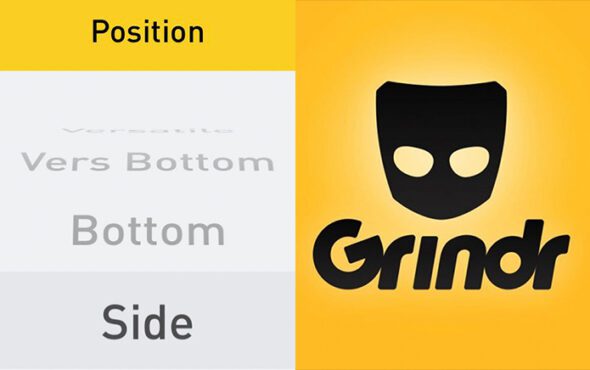
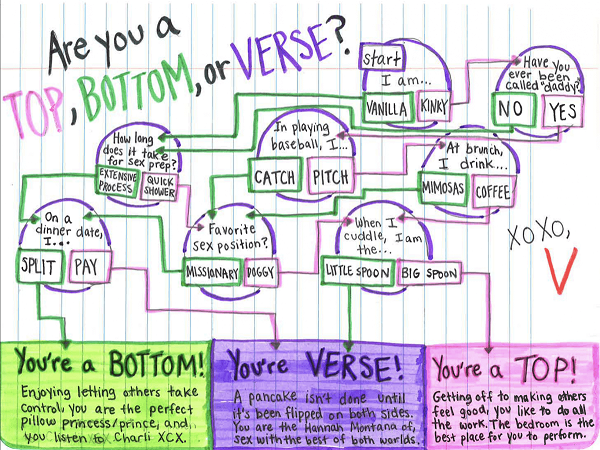
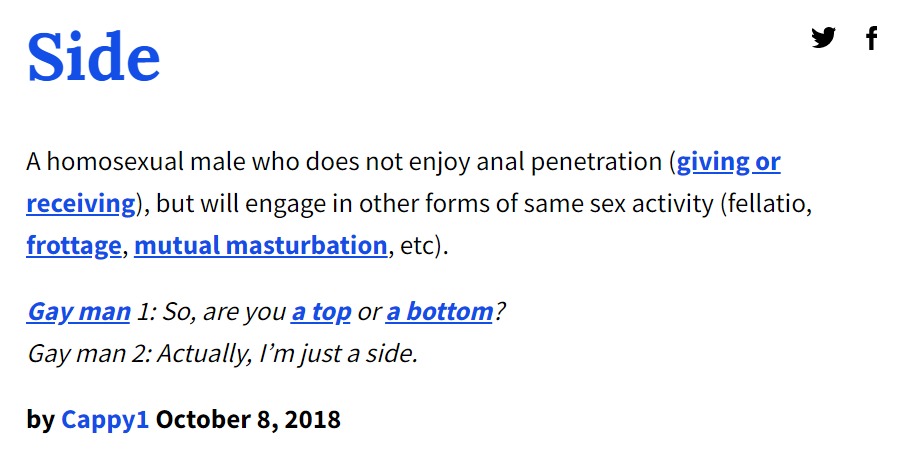
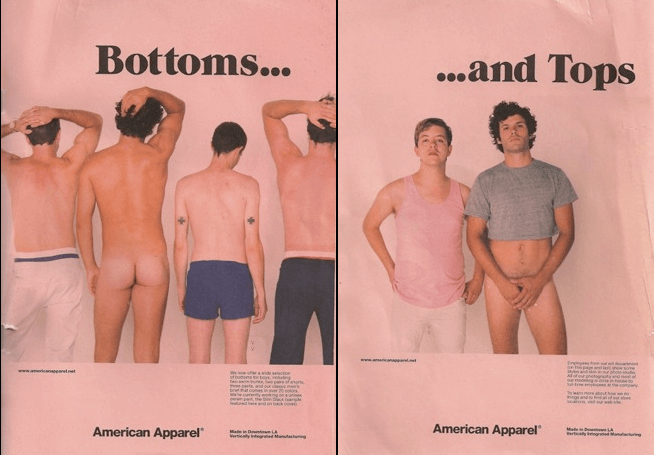
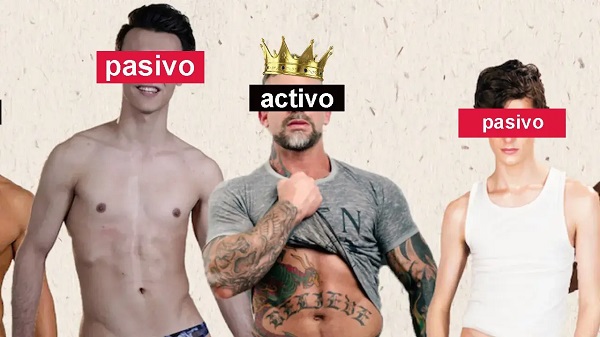

 Login
Login